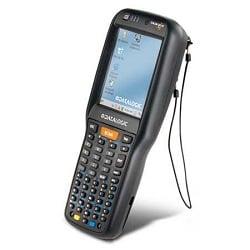Barcodes are more than just a series of digits below some black and white parallel lines. Sure, they look simple enough. The processes they are involved in can be simple as well. Mostly, barcodes are used to keep track of inventory by associating a particular item with a particular series of numbers and parallel lines, computers are more easily able to keep track of the status or location of the item. Barcodes today, however, are being used for increasingly complex functions. To help carry out these functions, many companies offer scanners and software that are designed to work with barcodes. Barcode rentals and rental equipment and software are usually offered for customers who only need to work with barcodes on a temporary basis. Beyond this equipment, another thing that helps businesses and individuals take advantage of barcodes is understanding the different types of barcodes that are available. That’s right; there is more than one type of barcode. While you might not need to become a barcode expert to achieve business success, it may be beneficial to have a handle on the barcode basics. With that in mind, here is a look at the two broad categories barcodes can fall into.

One-Dimensional
Most barcodes fall into the category of one-dimensional barcodes. These barcodes are also referred to as 1D barcodes. These barcodes represent data by uniquely spacing a set of parallel lines in association with a particular data point. Most of the barcodes you are familiar with, especially if you are an adult, are 1D barcodes. Among the subtypes of one-dimensional barcodes are UPC barcodes, those used to label and scan the goods you buy. EAN barcodes are another type of one-dimensional barcode that are very similar to the UPC code. EAN codes are used mainly in Europe. A barcode known as Code 39 is used to label goods in industries like the defense and automotive industry. Code 39 is different from the first two barcode types mentioned because it allows for the use of both numbers and characters below the parallel lines, not just numbers. There are even more subtypes of one-dimensional barcodes for different purposes, locations and industries.
Two-Dimensional
Two-dimensional or 2D barcodes also represent data. These barcodes, however, use two-dimensional symbols and shapes, as opposed to the linear, one-dimensional barcodes; this allows 2D barcodes are able to represent more data per unit area than 1D barcodes. The most common type of 2D barcode is the QR code. QR codes are being used increasingly in advertisements that encourage viewers to use their smartphone to scan a barcode in or around the ad for more information. These are used in similar ways on business cards and magazines. These codes are increasingly popular for their fast readability, size flexibility, free cost and high fault tolerance. They are unable, however, to be read with laser scanners. Of course, there are even a few different specific types of QR codes that support different modes of data, but that would probably be too much information about barcodes in one sitting.
